From August 27 to 29, 2025, our team conducted a three-day story building workshop with 17 students from Dolpo who are currently residing at the Snow Leopard Residence in Kathmandu.
The workshop was part of the ONGD-LLEST project, where we are aiming to develop learning materials in local languages for early childhood education. One of the goals of this initiative has been to expand the “Hamro Ramailo Kathaharu” (HRK) collection to build young learners’ early literacy skills. To achieve this, we are both translating existing stories and creating new ones in languages such as Tibetan, Nepalbhasa, Maithili, and English.
 |
 |
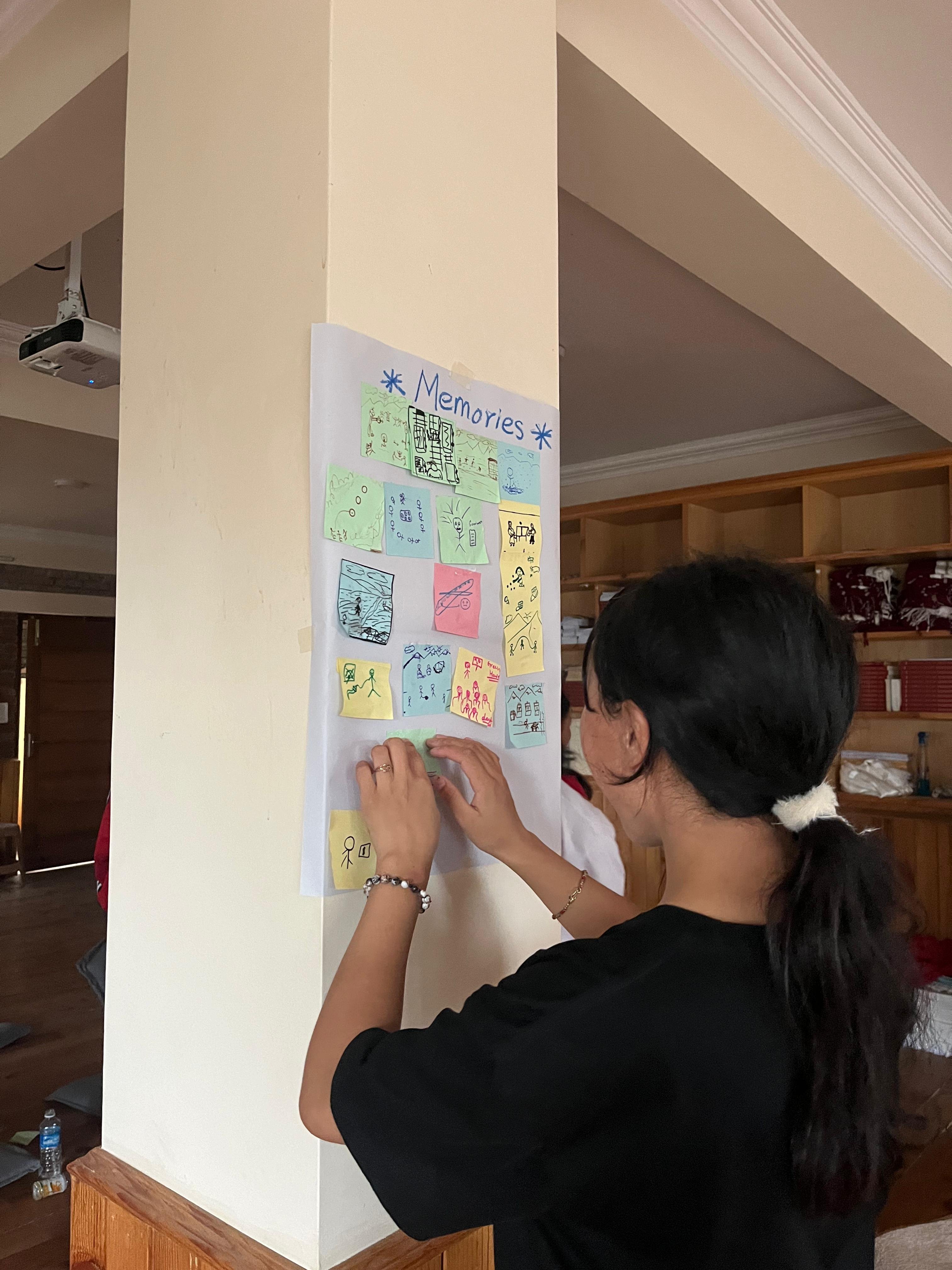 |
The first day of the workshop focused on the first steps of story building. We began with a simple question: “What are stories for?”. The students shared that stories can teach lessons, give courage, and bring out voices that are often left unheard. Through doodles and sketches, they captured small yet powerful memories such as helping a friend, overcoming fear, or recalling a family tradition. They then interviewed each other and shared in groups, exploring prompts such as a person they admire, a challenge they faced, a place that deserves a story, a dream they hold, and a value they cherish. Later, they stepped outside to collect a few objects each from their surroundings that could be imagined as part of a story setting. They collected objects such as a stone, a leaf, a button, a stick etc. By the end of the day, the participants had gathered the ideas and materials they would build on in the next sessions.
 |
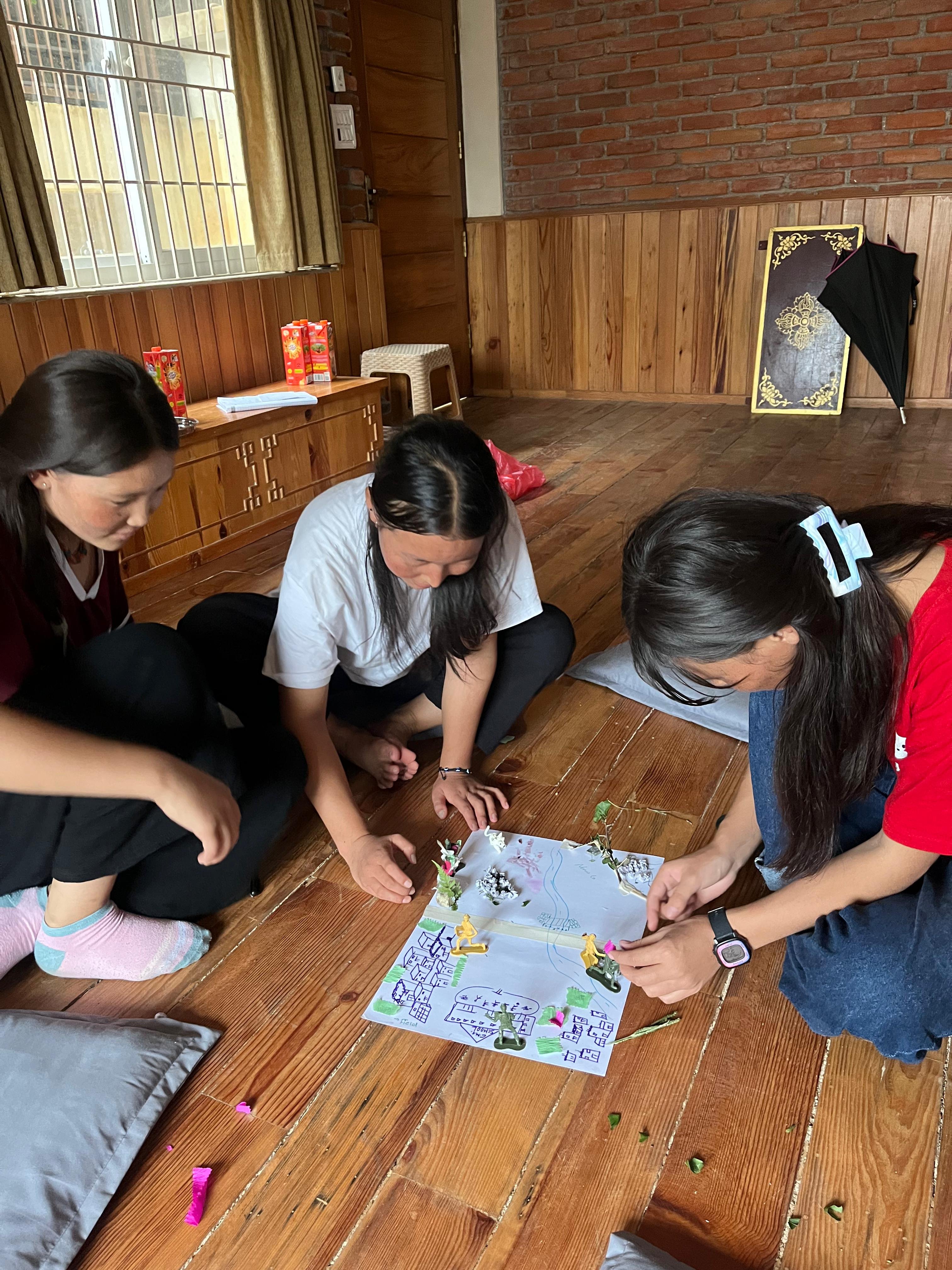 |
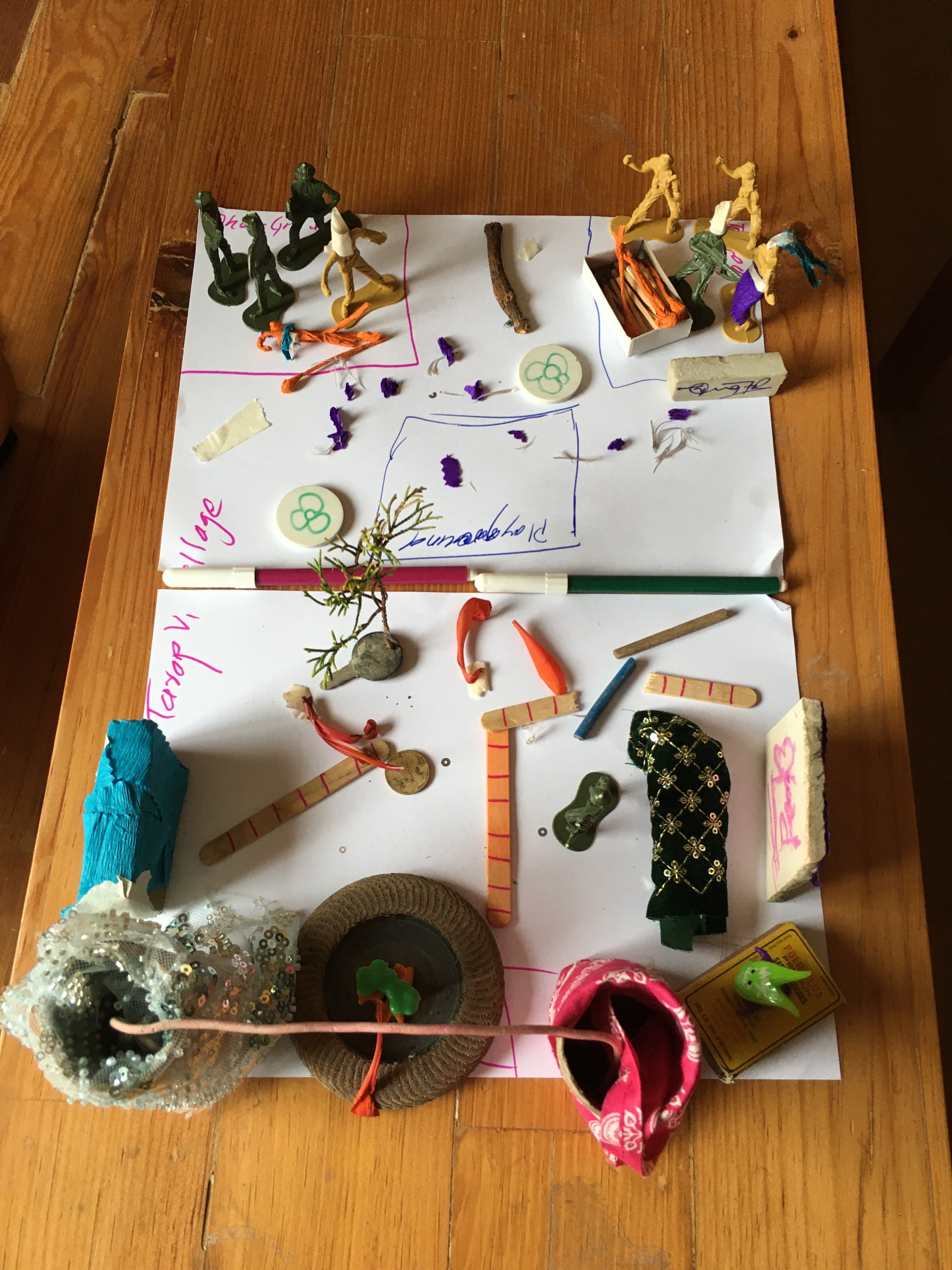 |
The second day was about finding the storyteller’s voice. We started by asking: What makes a storyteller different? The students recalled grandparents, teachers, and friends whose stories stayed with them, not because they were extraordinary, but because of how they were told. Next, we watched म बाजे र भुत from the HRK collection (also available in Youtube) and discussed its characters, setting, and flow. This helped introduce the basics of story structure. We reflected on how the beginning draws us in, the middle develops the action, and the end ties everything together. We also explored storytelling techniques such as exaggeration, personification, metaphor, and looking at events from unusual perspectives. These tools helped students see that stories are built step by step carefully with care and intentions. Working in groups, they selected story ideas, sketched scenes, and used collected objects as props. Sticks became mountains, twigs became trees, and matchboxes turned into houses. Acting out short snippets like “story trailers,” they practiced how to set up characters, conflicts, and curiosity.
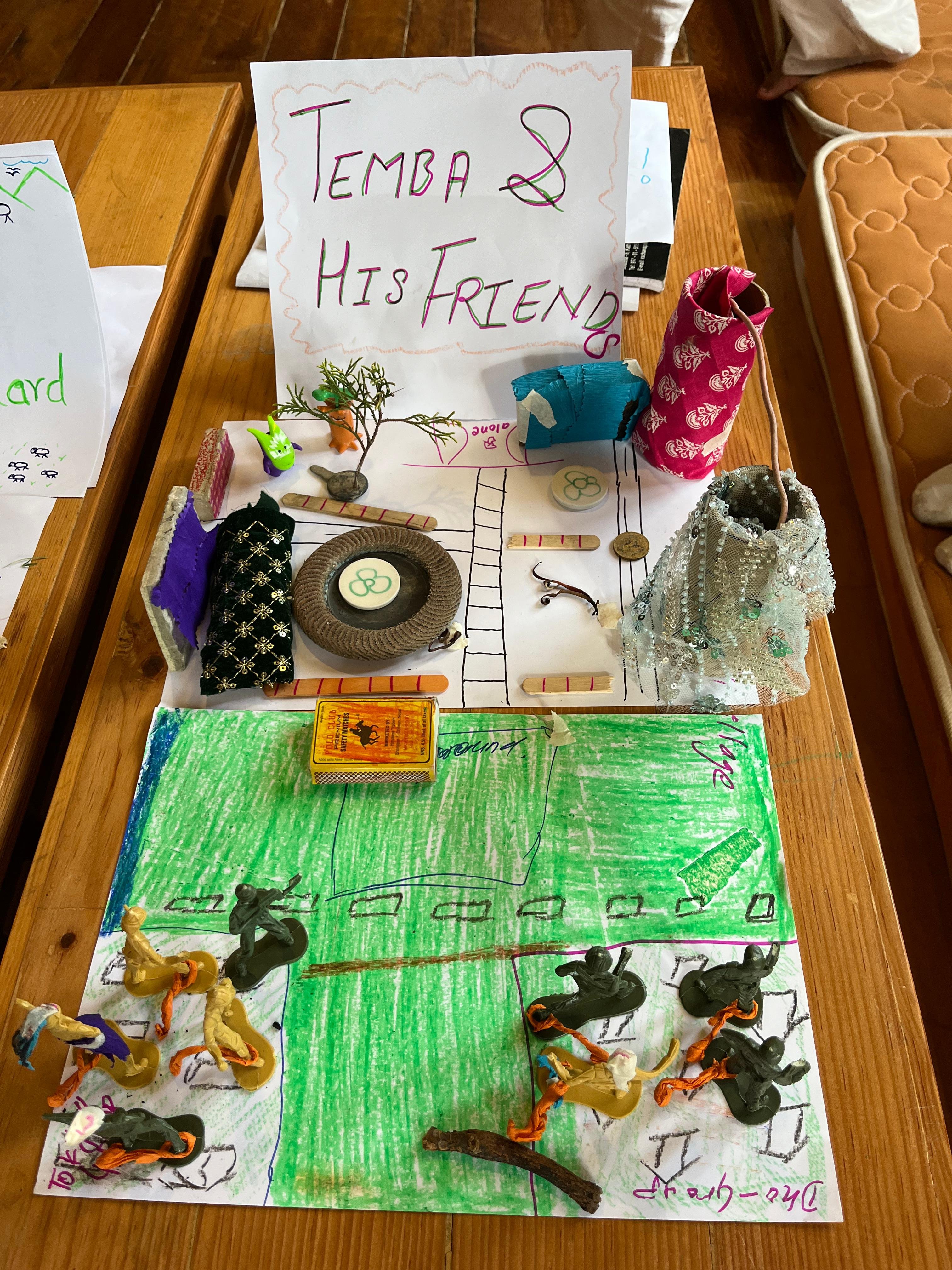 |
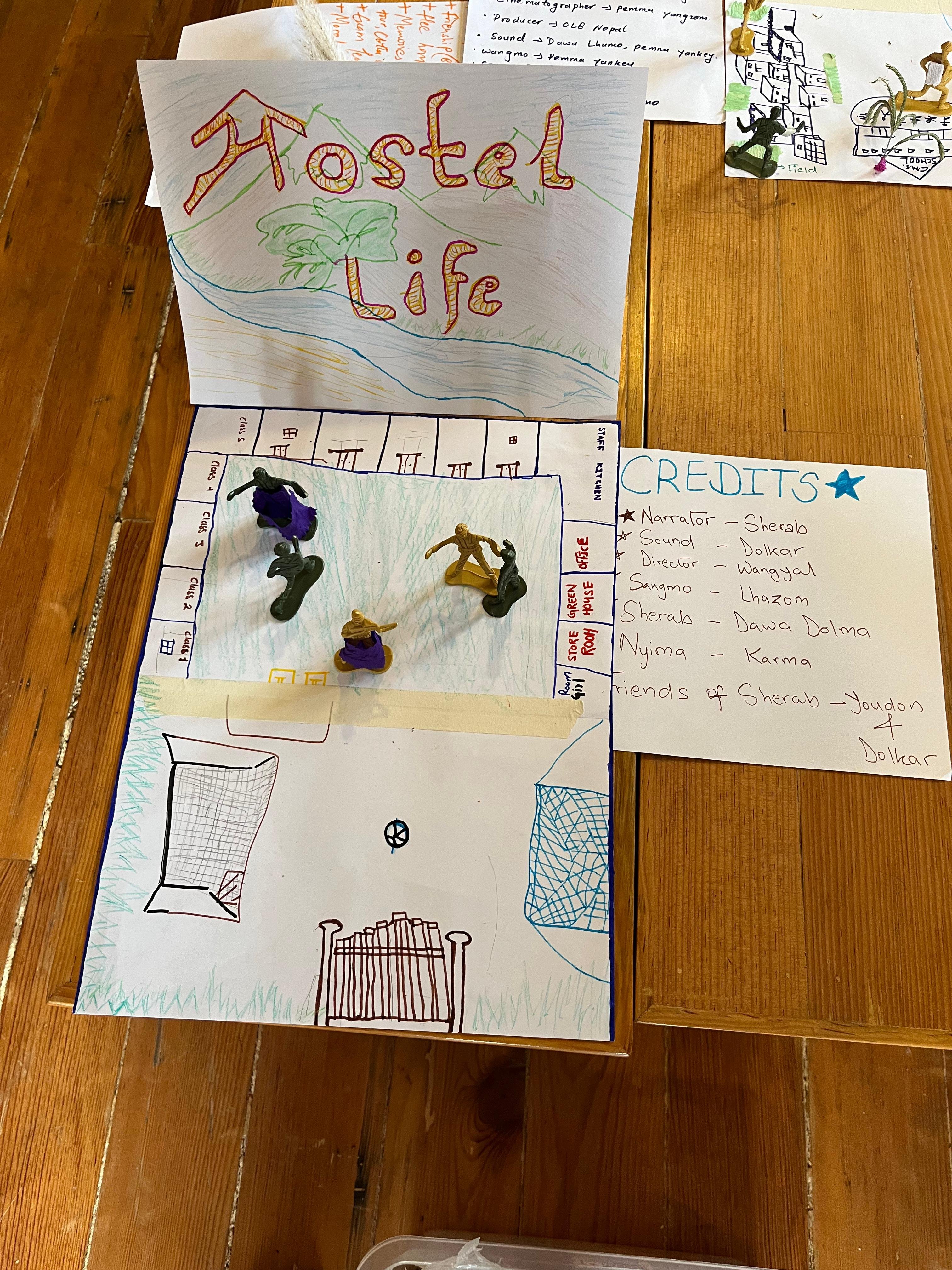 |
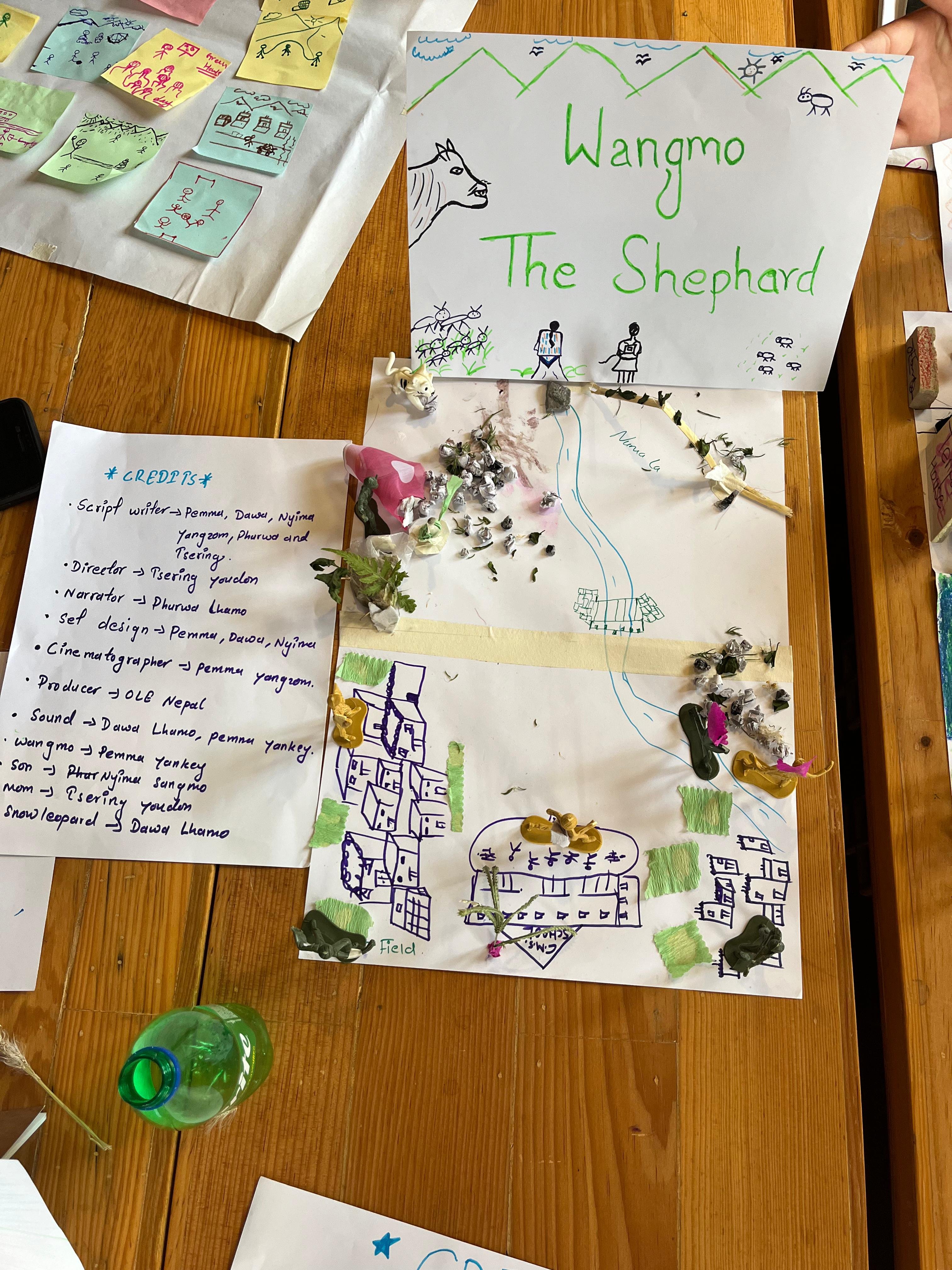 |
Finally, the third day was about shaping and sharing complete stories. Groups polished their drafts, prepared cue notes, and rehearsed with props. They performed short sections for peer feedback, revised their ideas, and finally presented their finished stories to the group. One story followed Temba and his friends from a peaceful village. A yak horn, once a toy, became the voice of wisdom, warning them against conflict. Later, when Temba moved to the city, he discovered loneliness amidst the crowds. In the end, he returned home, realizing the importance of peace, friendship, and staying rooted in one’s community.
Another story explored the life of Sangmo, who imagined hostel life would be full of excitement. Instead, she encountered bullying and hardship. Over time, Sangmo and her friends learned resilience, built support systems, and found meaning in their own happiness.
The third story followed Wangmo, a young girl who longs to attend school with her brother and friends but must stay home to tend the family’s sheep. When a snow leopard attack devastated the herd, support from the community helped her family recover. Wangmo carried on as a resilient and caring young shepherd.
All the three stories we built during the workshop grew out of lived experiences and also reflected Dolpo’s cultural landscape showing its villages, mountains, and everyday objects that naturally became part of the storytelling, making the narratives feel authentic and grounded.
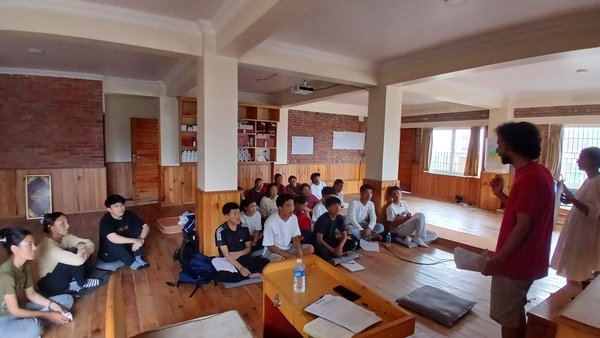
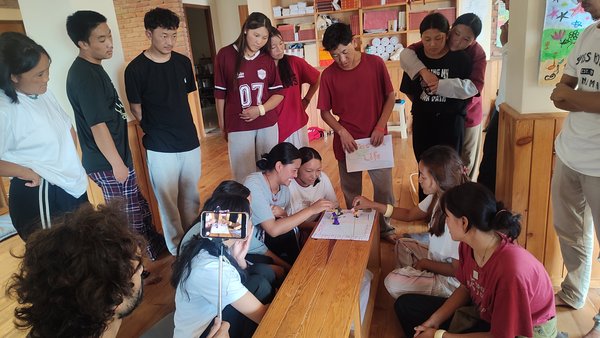
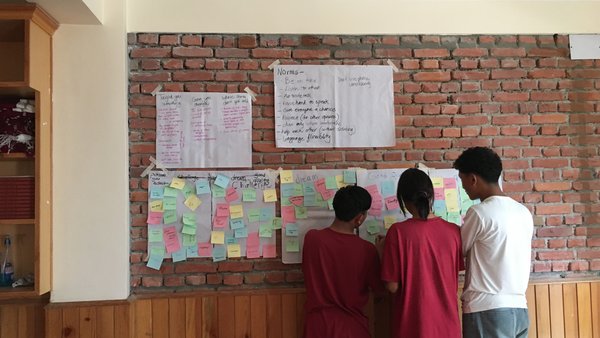
Looking ahead, the stories from this workshop will remain in our growing repository of "Hamro Ramailo Kathaharu" collection. Some will later take shape as animated videos, storybooks, or classroom resources. More importantly, they carry the voices of the young storytellers who imagined them. Their effort throughout this workshop has reminded us that storytelling is also a way of passing on memories, values, and lessons across communities and generations.
At a time when communities everywhere seek connection and hope, stories teach, inspire, and bring people together across distance and time. These stories from Dolpo are created for children as part of their early education, but they are also contributions to our shared cultural values that strengthens us all.
We are deeply thankful to all the students who participated for their creativity and engagement, and to our partner ONGD-FNEL for their continued support.